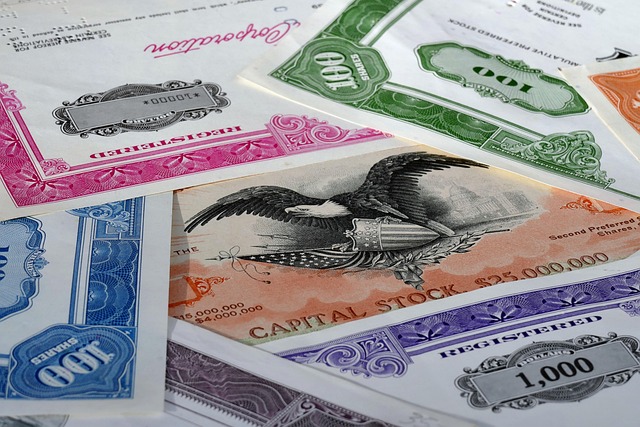Cathie Wood’s ARK bags $26M in Coinbase shares, unloads Bitcoin ETF
Cathie Wood’s investment firm ARK Invest is showing a mixed reaction to the United States’ latest trade tariffs, offloading shares of its spot Bitcoin ETF while increasing its position in Coinbase.ARK has acquired $26.6 million of Coinbase (COIN) stock since US President Donald Trump announced new trade tariffs on April 2, according to trading data seen by Cointelegraph.The purchase includes a $13.2 million COIN buy on April 7 and another $13.3 million purchase on April 4.Despite this bullish move on Coinbase, ARK simultaneously sold $12 million of its ARK 21Shares Bitcoin ETF (ARKB) on April 7. ARKB was one of the spot Bitcoin ETFs that launched in the United States in January 2024.ARKW still offers $142 billion of indirect exposure to BitcoinARK’s $12 million ARKB sale from its Next Generation Internet ETF (ARKW) fund is one of the largest daily ARKB sales by the firm.The latest dump follows an $8 million ARKB sale on March 3, another $8.6 million sale in February, and two smaller sales from January, totaling $3.5 million.Top three holdings in ARK’s Next Generation Internet ETF. Source: ARKFollowing the sales, ARKW continues offering indirect exposure to Bitcoin (BTC) through its ARK Bitcoin ETF Holdco, its largest position by market value. As of April 8, it held $142 million in ARKB, accounting for 11% of the fund’s weight, according to ARK’s website.Bitcoin ETFs expand bleeding on tariffs newsThe new trades came amid a major market sell-off, with BTC briefly sliding 11% to as low as $74,700 following the tariffs announcement, according to CoinGecko data.Following $207 million in outflows from global Bitcoin exchange-traded products (ETP) last week, Bitcoin ETFs continued bleeding, starting the week with fresh $109 million outflows on April 7, according to data from SoSoValue.Related: Michael Saylor’s Strategy halts Bitcoin buys despite dip below $87KIn the past three trading days, Bitcoin ETFs shed $273 million combined, according to SoSoValue.Spot Bitcoin ETF data in the period from April 1 to April 7. Source: SoSoValueDespite recent selling pressure, ARK remains one of the few spot Bitcoin ETF issuers with net positive flows year to date. As of April 4, ARK had recorded $146 million in inflows for 2025, CoinShares data shows.Other issuers with positive year-to-date inflows include BlackRock’s iShares, with $3.2 billion and ProShares, with $398 million.Magazine: Bitcoin heading to $70K soon? Crypto baller funds SpaceX flight: Hodler’s Digest, March 30 – April 5
The gold standard is back — Stablecoins need to rethink what ‘backing’ really means
Opinion by: William Campbell, advisory lead at USDKGStablecoins were heralded as a breakthrough in the cryptocurrency space as a way to marry the lightning-fast, borderless nature of digital assets with the stability of traditional currencies. They achieve this by pegging their value to reserves like fiat currencies or commodities. Stablecoins are engineered to maintain a fixed exchange rate, typically one-to-one, with the underlying asset.What does “stability” mean? At its core, stability demands three pillars:Reliable collateral: The tangible assets that back the token.Transparency: The ability for anyone to independently verify reserves.Consistent peg maintenance: Robust safeguards against depegging, where a stablecoin’s market value strays from its fixed ratio with the underlying asset.Without these foundational elements, stablecoins are little more than speculative instruments masquerading as safe harbors. In 2022 alone, billions in value evaporated when supposedly “secure” stablecoins lost their pegs, meaning their market prices diverged significantly from their intended 1:1 ratio with an underlying asset — prompting an unsettling question: Can digital assets ever be genuinely stable without demonstrable and independently audited backing?The need for reliable asset-backed modelsRecent market events have exposed severe fundamental weaknesses in privately issued stablecoins. These tokens often rely on opaque mechanisms, inadequate audit practices or collateral that investors cannot independently verify.These shortcomings repeatedly led to sudden “depegging” events, such as the collapse of Iron Finance’s TITAN token in 2021. The overleveraged algorithmic system collapsed to near zero, wiping out billions in liquidity.TerraUSD’s meltdown in 2022 also highlighted a similar vulnerability, with the stablecoin’s value disintegrating quickly, intensifying doubts about algorithmic models lacking transparent reserves.Meanwhile, partially collateralized and so-called “fully audited” stablecoins have faced scrutiny for inconsistent disclosure practices. Even well-known issuers must constantly prove their reserves are sufficient and legitimate.Recent: The state-backed stablecoin coin to change Kyrgtzstan’s (and global) economyThese issues primarily stem from insufficient oversight and ambiguous collateral management practices by private issuers. Investors typically have limited means to independently verify reserves, fueling persistent doubts about whether the stated backing genuinely exists or whether tokens are properly collateralized.Only models with tangible asset support and verifiably documented reserves can genuinely deliver the stability that digital assets promise. Through transparent frameworks, we can rebuild trust and usher in a new era of reliable digital finance. These events underscore a universal truth: True stability is forged through auditable oversight and verifiable reserves, not hollow branding.Gold is a timeless anchor Gold has served as humanity’s ultimate store of value for millennia, preserving wealth through wars, economic collapses and pandemics. Its scarcity, intrinsic worth and universal acceptance have made it a refuge when institutions falter — evidenced by its 25% surge during the 2020 market crash as investors fled volatile assets.Gold’s value transcends borders and ideologies, resting on tangible scarcity rather than hollow promises. For example, while the US dollar has lost 96.8% of its purchasing power since 1913, gold has consistently preserved and even grown its purchasing power. This track record positions it as an ideal anchor for digital assets seeking stability in a volatile crypto landscape.Critics of gold might point to its storage and custodial costs, along with the logistical challenges of physically moving bullion. Modern vaulting solutions and robust insurance measures have, however, largely mitigated these concerns, particularly when combined with blockchain-based audit mechanisms.Gold-backed stablecoins capitalize on this timeless reliability, pairing physical gold’s enduring value with blockchain’s efficiency. By linking digital tokens directly to physical gold, they sidestep the speculative risks of cryptocurrencies and the inflationary pitfalls of government-issued money. Blockchain-enabled gold tokenizationBlockchain technology removes the traditional obstacles to gold ownership by enabling fractional digital ownership and global trading without intermediaries. Physical gold stored in regulated vaults is digitized into tokens, each representing a precise fraction of the underlying asset. Every transaction is immutably recorded on a decentralized ledger, enabling investors to continuously check reserves in real time through automated smart contracts.This system overcomes gold’s historic limitations, including illiquidity and high storage costs, while eliminating the opacity of traditional reserve management. Merging gold’s tangible security with blockchain’s immutable record-keeping, the system also engineers trust directly into the architecture.This approach creates a stablecoin model unlike any other, where verifiable backing is the system’s backbone, not merely promised on paper.Creating stablecoins that truly deliver stabilityGold-backed stablecoins merge blockchain’s inherent accountability with gold’s stability, establishing a new class of digital assets resistant to volatility. Anchoring digital tokens to gold’s intrinsic value, this model sidesteps the volatility of speculative cryptocurrencies and the inflationary risks of government-issued currencies. The result is a stablecoin engineered for trust, where stability isn’t promised by code or institutions — it’s bolstered by tangible scarcity and blockchain’s unyielding transparency.Trust as a cornerstoneThe primary challenge facing stablecoins is establishing user trust. This trust can’t be built solely on a company’s reputation. It must be earned through independently verifiable collateral, real-time audits and clear regulatory oversight.Innovative hybrid models showcase this approach effectively. The government strictly regulates and audits the gold reserves in a hybrid model to maintain verifiable 1:1 backing. The private entities handle token issuance, trading and compliance processes, carefully separating state verification of collateral from private management of operational functions.This public-private partnership ensures rigorous oversight without creating a central bank digital currency. As they divide responsibilities, the model establishes a system where the government guarantees authenticity and collateral integrity while private enterprises handle operational efficiency, ensuring a balanced and decentralized yet trustworthy environment.Toward a more trustworthy digital financial ecosystemGenuine stability in digital finance emerges not from marketing slogans but from transparent mechanisms and verifiable collateral.The future of digital finance lies in combining blockchain’s revolutionary transparency with the historically proven stability of gold, especially under government auditing and privately managed structures. As more asset-backed solutions emerge, institutions, regulators and everyday users will adopt stablecoins that transparently deliver on their stability promises.This evolution marks a pivotal shift. Investors will no longer accept vague assurances. Investors demand concrete stability. Gold-backed stablecoins, blending ancient reliability with blockchain innovation, will lead the next generation of digital financial instruments, ensuring stablecoins fulfill their original promise — stability without compromise.Opinion by: William Campbell, advisory lead at USDKG.This article is for general information purposes and is not intended to be and should not be taken as legal or investment advice. The views, thoughts, and opinions expressed here are the author’s alone and do not necessarily reflect or represent the views and opinions of Cointelegraph.
Wall Street is suffering a stinky meltdown while Fartcoin is up 30%
While crypto and stock markets are deep in the red this week, one memecoin is defying the trend and surging at the time of writing. Fartcoin (FARTCOIN) has surged a whopping 30% over the past 24 hours, topping $0.60 on April 8, according to CoinGecko. On April 7, the Solana-based memecoin hit a low of $0.42 amid the broader crypto market slump, which saw Bitcoin (BTC) prices fall below $75,000 to a five-month low. However, since then the token has gained more than 40% and is one of the crypto market’s top performers at the moment. Crypto trader “RookieXBT” told their 484,000 followers that Fartcoin volume was increasing “while the world falls apart,” adding, “No other coin is doing this.” The financial parody account “Not Jerome Powell” quipped, “hot air rises,” noting that every asset was down aside from Fartcoin. Stock markets across the globe slumped on April 7 in reaction to Donald Trump’s sweeping trade tariffs. S&P 500 tanked almost 10% over the past week. Source: Google FinanceThe Fartcoin token, which launched in October with no utility, has defied the markets several times before by bouncing upward when other assets have tanked. Bitcoin dumped 6% on April 3 in a fall from above $87,000 to around $81,500. Fartcoin was one of the first to recover, surging 36% the following day. Additionally, the token saw its market capitalization top $1 billion in December during a wider slump for altcoins. Goldbug Peter Schiff responds to Fartcoin prices. Source: XIt hit an all-time high of $2.48 during the peak of the memecoin frenzy in mid-January. However, it has since retreated 76% from those levels as the memecoin bubble burst. Other memecoins also bounce upwardA related Solana memecoin based on a comic book character called Fartboy (FARTBOY) is also surging, having gained 60% to top $0.03 on April 8, according to CoinGecko. However, this memecoin is also down 85% from its mid-February peak. Related: Memecoins 2.0: The market crashed, but the billion-dollar circus rolls onOther memecoins outperforming the wider crypto market at the moment include SPX6900 (SPX), which is up 11.5%; Cheems Token (CHEEMS), which has gained 10.5%; AI Companions (AIC), currently up 10%; and Mog Coin (MOG), which has surged 33% on the day. Even the memecoin stalwarts Dogecoin (DOGE) and Shiba Inu (SHIB) have outperformed Bitcoin over the past 24 hours. Magazine: Financial nihilism in crypto is over — It’s time to dream big again
US to get its first XRP-based ETF, launching on NYSE Arca
Asset manager Teucrium Investment Advisors is set to launch the first XRP-based exchange-traded fund in the US markets, a leveraged XRP (ETF) on the NYSE Arca.The Teucrium 2x Long Daily XRP ETF will seek to offer investors two times the daily return of the XRP (XRP) token with a 1.85% management fee and annual expense ratio, according to the company’s website. The XRP-based ETF will trade under the XXRP ticker beginning April 8.”If you have a short-term high-conviction view on XRP prices, you may consider exploring the Teucrium 2x Long Daily XRP ETF,” the alternative asset manager said.XXRP currently has $2 million worth of net assets.Details of Teucrium’s soon-to-be-launched XXRP ETF. Source: TeucriumTeucrium founder and CEO Sal Gilbertie told Bloomberg on April 7 that investors had shown strong interest in an XRP ETF and hinted that it may file to list more crypto ETFs in the future.Gilbertie was also pleased that XXRP would launch during a market downturn driven largely by US President Donald Trump’s tariffs.“What better time to launch a product than when prices are low?” Gilbertie told Bloomberg.Likelihood of an approved spot XRP ETF still high: AnalystBloomberg ETF analyst Eric Balchunas said it was “very odd” to see a new asset’s first ETF come in leveraged form — however, he added that the odds of a spot XRP ETF being approved remain “pretty high.”Source: Eric BalchunasSeveral spot XRP ETF applications from the likes of Grayscale, Bitwise, Franklin Templeton, Canary Capital and 21Shares are being reviewed by the Securities and Exchange Commission.In February, Balchunas and fellow Bloomberg ETF analyst James Seyffart attributed 65% approval odds to a spot XRP ETF in 2025.Predictions market Polymarket states there is currently a 75% chance that the SEC will approve a spot XRP ETF in 2025.Related: XRP price sell-off set to accelerate in April as inverse cup and handle hints at 25% declineUp until recently, ETF issuers would have seen a different environment for filing for XRP ETFs as Ripple Labs — the creators of the XRP token — and the SEC battled out a four-year court battle over XRP’s security status.That case came to a close last month.Teucrium has amassed over $310 million worth of assets under management since it was founded in 2010.It offers mostly agricultural commodities, such as ETFs tracking the likes of corn, soybeans, sugar and wheat.Magazine: XRP win leaves Ripple and industry with no crypto legal precedent set
Nigerian court postpones Binance tax evasion case to end of April: Report
A Nigerian court has reportedly delayed the country’s tax evasion case against Binance until April 30 to give time for Nigeria’s tax authority to respond to a request from the crypto exchange.Reuters reported on April 7 that a lawyer for Binance, Chukwuka Ikwuazom, asked a court the same day to invalidate an order allowing for court documents to be served to the company via email.Binance doesn’t have an office in Nigeria and Ikwuazom claimed the Federal Inland Revenue Service (FIRS) didn’t get court permission to serve court documents to Binance outside the country.”On the whole the order for the substituted service as granted by the court on February 11, 2025 on Binance who is … registered under the laws of Cayman Islands and resident in Cayman Islands is improper and should be set aside,” he said.FIRS sued Binance in February, claiming the exchange owed $2 billion in back taxes and should be made to pay $79.5 billion for damages to the local economy as its its operations allegedly destabilized the country’s currency, the naira, which Binance denies.It also reportedly alleged that Binance is liable to pay corporate income tax in Nigeria, as it has a “significant economic presence” there, with FIRS requesting a court order for the exchange to pay income taxes for 2022 and 2023, plus a 10% annual penalty on unpaid amounts along with a nearly a 27% interest rate on the unpaid taxes.Nigeria’s legal history with BinanceIn February 2024, Nigeria arrested and detained Binance executives Tigran Gambaryan and Nadeem Anjarwalla on tax fraud and money laundering charges. The country dropped the tax charges against both in June and the remaining charge against Gambaryan in October.Tigran Gambaryan (right) was seen in a September video struggling to walk into a courtroom in the Nigerian capital of Abuja. Source: XAnjarwalla managed to slip his guards and escape Nigerian custody to Kenya in March last year and is apparently still at large.Related: Binance exec shares details about release from Nigerian detention Gambaryan, a US citizen, returned home in October after reports suggested his health had deteriorated during his detainment with reported cases of pneumonia, malaria and a herniated spinal disc that may need surgery.Binance stopped its naira currency deposits and withdrawals in March 2024, effectively leaving the Nigerian market.Magazine: Trash collectors in Africa earn crypto to support families with ReFi
China’s tariff response may mean more capital flight to crypto: Hayes
China’s response to America’s sweeping trade tariffs could result in capital flight to Bitcoin and crypto, according to BitMEX founder Arthur Hayes.“If not the Fed [Federal Reserve], then the PBOC [People’s Bank of China] will give us the Yahtzee ingredients,” said Hayes on X on April 8 in reference to the catalyst needed to resume the crypto market bull run.Hayes said that if the Chinese central bank devalued its currency, the yuan, the “narrative [is] that Chinese capital flight will flow into Bitcoin,” adding that “it worked in 2013, 2015, and can work in 2025.” Bybit co-founder and CEO Ben Zhou said that China will try to lower the yuan to counter the tariff, adding that historically, whenever the yuan drops, “a lot of Chinese capital flows into BTC,” which is bullish for Bitcoin (BTC).The yuan has weakened against the greenback since 2022. Source. Google FinanceChina devalued the yuan by nearly 2% against the US dollar, which saw the largest single-day drop in decades in August 2015. Bitcoin did see some increased interest during this period, though the direct causative relationship is debated.When the yuan fell below the symbolic 7:1 ratio against the USD in August 2019, Bitcoin also saw price increases in the same timeframe. Some analysts suggested that Chinese investors were using Bitcoin as a hedge as the asset jumped 20% in the first week of that month. In 2019, crypto asset manager Grayscale noted the depreciation in the Chinese yuan at attributed it as a factor that spurred Bitcoin markets at the time. Currency control avoidance and wealth preservationWealthy Chinese citizens may have used crypto in the past to preserve their wealth, move it beyond government reach, and avoid capital controls and restrictions within the country, according to analysts. It is also believed that currency devaluations also damage trust in central banks and government financial management, pushing people toward decentralized alternatives like Bitcoin.Related: $2T fake tariff news pump shows ‘market is ready to ape’On April 7, the US president vowed to ratchet up additional tariffs against China, which responded by stating it “will fight to the end.”“If the US implements escalated tariff measures, China will resolutely take countermeasures to defend its own interests,” the Chinese Commerce Ministry said in a statement.Magazine: Financial nihilism in crypto is over — It’s time to dream big again
Mike Novogratz’s Galaxy Digital gets SEC nod for Nasdaq listing
Artificial intelligence and crypto investment firm Galaxy Digital has been given the nod from the US Securities and Exchange Commission to list on the Nasdaq stock exchange. The company, which is listed on the Toronto Stock Exchange (TSX), plans to relocate its home base from the Cayman Islands to Delaware, according to an April 7 statement from Galaxy, pending shareholder and TSX approval. “Our registration statement is now effective with the SEC. We’re on track to list on the Nasdaq shortly after our shareholder vote on May 9, contingent on completing our reorganization. Let’s go!” Galaxy CEO Michael Novogratz said in an April 7 statement to X. Source: Michael NovogratzGalaxy anticipates listing on the Nasdaq under the ticker symbol GLXY shortly after the vote, with the transition to be completed by mid-May, contingent on meeting Nasdaq listing requirements.Galaxy chooses Delaware for favorable corporate environmentIn the SEC Form S-4, first filed on March 27, Galaxy said it chose Delaware for the relocation because it would provide “a favorable corporate environment,” which would help it “compete more effectively with other publicly traded companies.” The firm also chose Delaware because it’s the “choice of domicile for many publicly traded corporations,” has an abundance of case law to assist in interpreting the Delaware General Corporation Law (DGCL), and lawmakers frequently update the DGCL to reflect current technology and legal trends. After the change, Novogratz will maintain control of the company with nearly 60% of voting power, according to the filing. Galaxy Digital’s share price on the TSX was down 8% after the bell, trading at $12.30 Canadian dollars ($8.70), according to Google Finance. The stock was first listed in July 2015 and peaked at just under $50 Canadian dollars ($35) on Nov. 12, 2021.Galaxy Digital’s share price on the TSX was down 8% after the TSX closed. Source: Google FinanceGalaxy recently agreed to pay $200 million in a settlement related to its alleged promotion of the now-collapsed cryptocurrency Terra (LUNA). Related: NYSE proposes rule change to allow ETH staking on Grayscale’s spot Ether ETFsOther crypto firms are listed on the Nasdaq. Coincheck Group, the parent company of Japanese crypto exchange Coincheck, was one of the most recent, debuting on Dec. 11. Bitcoin-stacking investment firm Metaplanet has also been exploring a potential listing outside of Japan, such as the US, after CEO Simon Gerovich met with officials at the New York Stock Exchange and Nasdaq in March. Magazine: New ‘MemeStrategy’ Bitcoin firm by 9GAG, jailed CEO’s $3.5M bonus: Asia Express
Aussie regulator to shut 95 ‘hydra’ firms linked to crypto, romance scams
Australia’s corporate watchdog has been given the nod to shut down 95 “hydra” companies that it suspects engaged in crypto investment and romance scams, known as “pig butchering.”The Australian Securities and Investments Commission’s application to wind up the companies was approved by the Federal Court of Australia on just and equitable grounds after ASIC found that most of the companies had been incorporated with false information.Many of these companies were set up purporting to provide “genuine services” but were instead believed to be scamming their victims, ASIC Deputy Chair Sarah Court said in an April 8 statement.“There appears to be a common pattern of scam activity in the nature of ‘pig butchering,’” Justice Angus Stewart said in an April 4 court ruling after looking at 48 “Reviews of Misconduct” from 17 companies accused of facilitating romance scams. The judgment was made on March 21.Source: Rocky PerrottaPig butchering scams involve scammers building fake relationships with victims to win their trust before convincing them to invest in a fraudulent crypto or financial scheme.The securities regulator also suspects that much of the scam activity is coming from Southeast Asia.Insolvency and restructuring advisers Catherine Conneely and Thomas Birch of Cor Cordis have been appointed as joint liquidators of the 95 companies.Related: Australian regulator’s ‘blitz’ hits crypto exchanges, money remittersNearly 1,500 claims by “investors” had been received by the provisional liquidators, amounting to total claims of over $35.8 million, according to the court order.The claimants are based in 14 countries, including Australia, the US, Cameroon, Ghana, India, Nepal, the Philippines and France.The provisional liquidators found that only three of the 95 firms had assets to their name and recommended that the other 92 companies be wound up and immediately deregistered.ASIC shutting down scam websitesASIC said it has been removing around 130 scam websites each week of late, bringing its total to over 10,000 sites, which have included over 7,200 fake investment platform scams and 1,564 phishing scams.“However, these scams are like hydras: you shut down one and two more take its place. That’s why we’re warning consumers that the threat of scams and identity fraud remains high. We remind consumers to be vigilant,” Court said.Australia’s National Anti-Scam Centre recently reported a 26% fall in scam losses to $2 billion in 2024, while the number of scam reports also fell by 17.8% to 494,732.Magazine: Financial nihilism in crypto is over — It’s time to dream big again








